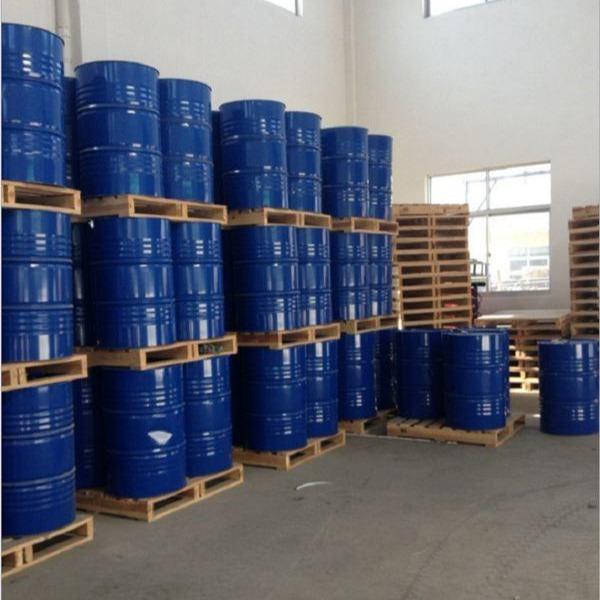-

2-Ethylhexyl acrylate
Chemical properties: Colorless transparent liquid. Almost insoluble in water. Miscible with alcohol and ether. Uses: 1. Used as a polymerization monomer, used in soft polymers, and plays an internal plasticizer role in copolymers. Uses: 2-Ethylhexyl acrylate is a monomer of high molecular polymers. It is copolymerized, cross-linked, grafted, etc. with other monomers to produce acrylic resin products. It is used in many aspects such as synthetic fiber fabric processing, adhesives, coatings, an...Read more -

Butyl acrylate
Butyl acrylate is mainly used to make polymer monomers for fibers, rubbers, and plastics. It is used in the organic industry to make adhesives, emulsifiers, and as an organic synthesis intermediate. It is used in the papermaking industry to make paper reinforcing agents. It is used in the coating industry to make acrylic coatings. Butyl acrylate (butyl acrylate) is the most important variety of acrylic esters. In the existing continuous Chemicalbook production process, direct esterification o...Read more -

Ethyl acrylate
Chemical properties: Colorless liquid, volatile. Miscible with ethanol and ether, soluble in chloroform, slightly soluble in water. Uses: 1. Mainly used as a comonomer of synthetic resins, the copolymers formed are widely used in coatings, textiles, leather, adhesives and other industrial uses. Ethyl acrylate is an intermediate for the preparation of carbamate insecticide benfuracarb. It can also be used as a raw material for protective coatings, adhesives and paper impregnation agents. Its p...Read more -

Methyl acrylate
Methyl methacrylate is a colorless liquid, the methyl ester of methacrylic acid, and an important organic synthetic monomer, mainly used in the production of polymethyl methacrylate (PMMA), also known as organic glass. Methyl methacrylate (MMA) has a variety of uses and is particularly important in polymer manufacturing. It can be converted into polymethyl methacrylate (PMMA) through free radical polymerization, which is a transparent thermoplastic material widely used in optics, lighting, co...Read more -

Acrylic acid
Acrylic acid is the simplest unsaturated carboxylic acid, and its molecular structure consists of a vinyl group and a carboxyl group. Pure acrylic acid is a colorless, clear liquid with a characteristic pungent odor. Density 1.0511. Melting point 14°C. Boiling point 140.9°C. Strong acidity. Corrosive. Soluble in water, ethanol and ether. Chemically active. Easy to polymerize to form a transparent white powder. Propionic acid is generated when reduced. 2-chloropropionic acid is generated when ...Read more -

VAE emulsion
VAE emulsion is a polymer emulsion made by copolymerizing vinyl acetate and ethylene monomers with other auxiliary materials through emulsion polymerization. When the vinyl acetate content is in the range of 70% to 95%, it is usually in an emulsion state, called VAE emulsion. VAE emulsion has a milky white or slightly yellow appearance. VAE emulsion is mainly used in adhesives, coatings, cement modifiers and paper processing, and has many excellent properties.Read more -

Acetic anhydride
Acetic anhydride is mainly used in the production of spices and dyes in industry, and is also used in the production of drugs and pesticides. In the laboratory, it is often used as an esterification agent, which can react with water, alcohol, phenol, etc. to undergo esterification reactions. In addition, acetic anhydride is also used in the production of photographic chemicals and paint drying agents.Read more -

Propyl acetate
Propyl acetate, also known as propyl acetate, n-propyl acetate, and n-propyl acetate, is a colorless, clear liquid with a soft fruity aroma. It exists naturally in strawberries, bananas, and tomatoes. It is soluble in most organic solvents such as alcohols, ketones, esters, and oils, and is slightly soluble in water. Propyl acetate has two isomers, namely n-propyl acetate and isopropyl acetate. Both are colorless, easy-flowing, transparent liquids. Both have a fruity aroma. Both exist in natu...Read more -

Poly(vinyl alcohol)
Polyvinyl alcohol is a solid that can be in the form of white powder, flakes or flocs. The glass transition temperature is 60-85°C. Polyvinyl alcohol contains many alcohol groups, is polar, and can form hydrogen bonds with water, so it can be dissolved in polar water. Polyvinyl alcohol can also be dissolved in hot hydroxyl-containing solvents such as glycerol and phenol, but is insoluble in general organic solvents such as methanol, benzene, acetone, and gasoline.Read more -

Vinyl acetate
Chemical properties: Colorless flammable liquid with a sweet ether aroma. It is miscible with ethanol, soluble in organic solvents such as ether, acetone, chloroform, carbon tetrachloride, and insoluble in water. Uses: 1. Vinyl acetate is the main raw material for the manufacture of synthetic fiber vinylon. Vinyl acetate is polymerized by itself or copolymerized with sub-monomers to obtain polyvinyl alcohol, vinyl acetate-ethylene copolymer (EVA), vinyl acetate-vinyl chloride copolymer (EVC),...Read more -
Chloroacetic acid
Chloroacetic acid is an important organic chemical product, mainly used in the production of fine chemicals such as medicines, pesticides, dyes, and fragrances.Read more -

DL-sec-Butyl acetate
Sec-butyl acetate, also known as sec-butyl acetate, is a colorless, flammable liquid with a fruity aroma. Sec-butyl acetate has many uses, including fragrance, medicine, solvent, metal cleaning agent, reaction medium and extraction agent. In recent years, due to the increasingly stringent chemical requirements for environmental protection worldwide, people tend to reduce the use of solvents such as toluene, xylene, and ketones. The development direction is to develop and utilize resin coating...Read more





